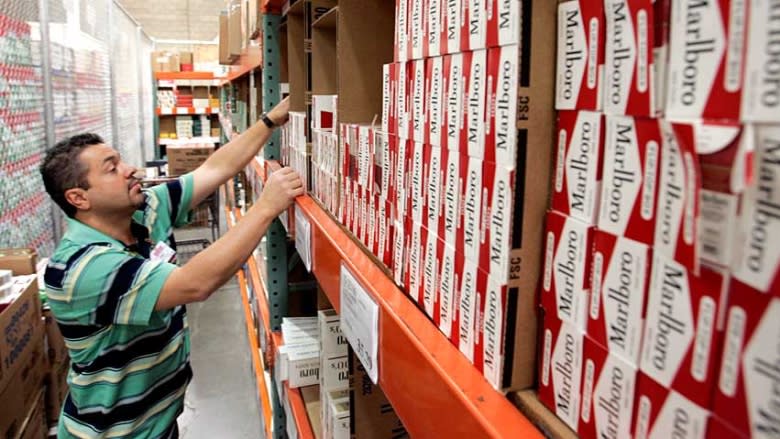Cigarette production hike in U.S. linked to disposable income
The U.S. appears to be doing something very odd this year — something it hasn't done in a decade. It's putting more money, not less, into tobacco.
The apparent uptick emerged this week from U.S. government statistics.
In its latest monthly tally of the manufacture of cigarettes and other smokeables, the Alcohol and Tobacco Tax and Trade Bureau said the U.S. made (or imported from Puerto Rico) a total of 167.7 billion cigarettes for the 12 months ending in July.
That's up 2.1 per cent from the 164.1 billion for the same period the year prior.
There was also an uptick in the production of snuff, though other products such as cigars and chewing tobacco fell.
If this trend continues through the year, it will add up to the first annual increase in U.S. cigarette shipments since 2006, which saw a bump of less than 1 per cent.
The numbers led to a report by the Bloomberg news service about the "boon" to investors of high-yield tobacco bonds, which one analyst noted was "a big change" from historical trends.
Why the change? Some theorize it's tied to the fall of the price of oil, which has left consumers with more cash on hand at gas stations and convenience stores, where the bulk of cigarette purchases are made.
Is more disposable income — or by extension, a healthy economy — bad for smoking rates?
Potentially, according to Rob Cunningham, a senior policy analyst with the Canadian Cancer Society.
Cunningham says the price and affordability of cigarettes are among the biggest factors that influence whether someone starts smoking or is able to quit — though they take a back seat to the over-riding power of nicotine addiction.
A rise in disposable income can make smokers less inclined to quit, or even get former smokers back into the habit, he says.
"Some people, not all, might go back to cigarettes if they quit because of cost, or it reduces the motivation to quit because of cost," he says.
Price is an even more powerful factor with young people, he says, in part because they have less money, more distractions and products competing for it, and perhaps because many young smokers haven't developed the same powerful addiction to nicotine as adults.
The recent push for a higher tobacco tax in Alberta stems from concern that an increase to the province's minimum wage might drive up youth smoking rates.
Rates levelling off
U.S. smoking rates tend to move in step with Canada's. Rates plunged on both sides of the border through the '90s and early 2000s, then levelled off around 2008. In 2013, 14.6 per cent of Canadians smoked, according to one study, with daily smokers averaging 13.9 cigarettes per day.
A recent study by the Centres for Disease Control and Prevention put the U.S. smoking rate at 15 per cent.
David Hammond, a professor at the School of Public Health and Health Systems at the University of Waterloo, says he doubts smoking will bounce back.
"There has been a slowing in the trend [of falling smoking rates]," he says. "But I've not seen any indication in the U.S. or Canada that there's a reversal."
Hammond agrees cigarette sales are "sensitive to price," but adds they're "somewhat less sensitive than other products."
Smoking patterns are "highly stable in an individual once established," he says. "Very rarely will you see a person smoke one [cigarette] a day, and 15 the next.
"And most people are trying to get out of it."


